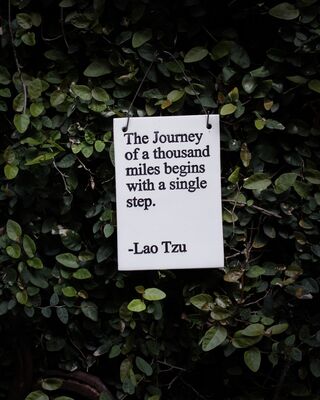Identity
Our Identity Can Strengthen the Therapeutic Relationship
Identity impacts our work in therapy. Let's explore it and not ignore it.
Posted September 7, 2022 Reviewed by Davia Sills
Key points
- Identity is something that should be explored in therapy, not shied away from.
- Recognizing that we all have blind spots is important to advancing therapeutic work.
- Normalizing the human experience of working through issues is an important part of humanizing therapy.

When I began my career as a therapist, I thought a lot about how my identity as a clinician would impact my therapeutic relationship with my clients. Initially, I was not sure how my identity as a gay Black male would influence clients to seek me as a therapist. I questioned whether my identity would be a primary factor in the decision of my clients to choose me as a therapist.
It was also a lesson for me to evaluate my own concerns about how others viewed my identity and my insecurities about how it would impact our therapeutic relationship. As therapists, we all have various aspects of our practice where we feel like we can be more confident and stronger in our work. However, we might not always have space within our professional network of support to explore the ways in which we can improve our work with other therapists.
In addition, both therapist and client might find it difficult to determine how and when to self-disclose parts of our identity. In “the room,” we may also struggle with what “authenticity” looks like in therapy. My hope is that client and therapist can work together to normalize thoughts about power dynamics in therapy and to challenge any assumptions of our own preconceived notions and biases that may arise in session. If you feel as a client that you are curious about these aspects of identity and transparency, you are not alone. Here are some thoughts to consider that may deepen the work between therapist and client.
Therapist and Client Alike Are on a Personal Journey.
Regardless of what we are exploring in therapy, therapist and client are both on a personal journey in their life to work through issues. Therapy, of course, is focused on your goals as the client. However, trust and believe that the therapist who is helping you to achieve your goals has things that they are working through outside of the session in their daily lives.
I encourage clients in session to express their thoughts about things that trigger them in therapy, especially if my communication elicits a reaction. There are many ways that we can address transference (the redirection of a client’s feelings onto the therapist) in therapy. This occurs naturally in session and can be utilized to explore and examine how the client can develop healthy coping skills if triggered. Emotional reactions in therapy that impact client and therapist alike will arise. Normalizing these reactions in session is helpful to understand how we can challenge ourselves respectfully to model the behavior that we want in our lives from others in communication.

Suggested Insight Is Always Open to Interpretation.
Often in therapy, clients may ask directly, “What should I do?” This is a common question. Of course, we try our best to help clients find “their” solution without answering the question directly—unless it is a crisis, etc. However, I often remind clients that my clinical insight is suggestive and open to the client’s interpretation based on how they feel about the information they have gathered in and out of the session to make an informed decision.
It is important for me to honor my client’s decision, even if it is different from my own or from what we discussed originally in therapy. There can be so much advocacy in decision-making by clients owning how they wish to be empowered to evoke change in their life.

It's Important to Challenge Assumptions About Our Visible Identities.
We are all human beings who are judged to some degree by our physical presentation. No matter how hard we try to fight preconceived notions and biases, we all make assumptions about how each other’s identity influences our work in therapy, especially in the first session. For both parties, our verbal and nonverbal cues are also being assessed, along with our speech and language patterns. To create an objective space in therapy for all individuals to be seen and heard, I challenge therapists to be more aware of how they might be seen in therapy and to acknowledge any perceptions that might be important to address to strengthen their rapport with our clients.
For example, when I work with female clients, I speak openly about my identity as a male and how that impacts my work. I also directly address blind spots I may have that make it difficult for me to truly understand the lived experience of the women that I work with in therapy. Addressing this early in the session creates a foundation for an open dialogue and enables the client to educate and challenge me if I present any stereotypes or misunderstandings about my client’s identity that may arise in therapy.
Identity is a tricky subject to discuss in therapy. Usually, I find that there may be this “sense of the unknown” or space in the therapy room that might not feel as secure as it could be for our clients to share. If the issue that keeps therapists and clients from “joining” in the room is around identity, I hope that the exploration of how identity informs our work will continue to help strengthen our sense of self in the present and challenge us to continue to see the humanity in all of us.


